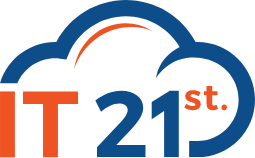 In our last blog we discussed some of the challenges (mainly technical) of working from home and connecting to the office remotely. In this Blog we are concentrating on how to get the most out of working remotely. There are ample tools and resources are now available (and some for free due to outbreak of coronavirus).
In our last blog we discussed some of the challenges (mainly technical) of working from home and connecting to the office remotely. In this Blog we are concentrating on how to get the most out of working remotely. There are ample tools and resources are now available (and some for free due to outbreak of coronavirus).
Most of these resources were tested out by large technology firms that were first to make the switch to remote working for all their staff, building on pre-existing infrastructure such as office chat groups, remote access to critical tools, and the fact that much knowledge work can be carried out remotely.
The followings are some ideas and recommendation to get the most out of working remotely:
- Make your working environment ergonomically comfortable to work for a long period of time. Purchase the right chair and desk and monitors to avoid any strains and fatigue. Some companies reimburse the cost.
- Beware of internet usage. Now that all the students are at home and using internet for their schools and online classes, the usage has increased and the speed has decreased. You may want to contact your ISP for different plans or ways to boost up your speed. Stagger your work to access the internet at night or different hours that demand is less.
- Managing your space: You may have more than yourself (kids, spouse, roommates, etc.) who are working remotely from your home. You will soon realize the significance of physical space, even when all you need to do your job is a laptop and a camera.
- Choose a collaboration tools and services to communicate with other members of your organization. Now many of these tools are free and no restrictions to use during the Coronavirus outbreak.
The most popular of these tools and services:
- Slack, the workplace management tool, is loved is a free-to-play business model: rather than needing to sign up the entire organization at once, it is easy for individual teams, desks and offices to get started with the free tier, and expand as they see fit. That means it is best placed to help home workers quickly recreate the sort of in-person chat they had in the office.
- Zoom,- Videoconferencing tools has impressed many by ironing out the kinks in an often-frustrating process. The app lifted its limit on free accounts as a response to the crisis, and theoretically supports up to 1,000 participants in a single meeting.
- Microsoft Teams- Is a productive way for teams to work from remotely home and stay connected. Use Teams for Free. Video Conferencing. Cloud Phone System. Part of Office 365. Instant Messaging. App Integrations. The App is included as part of Office 365.
- GoToMeeting- is an online video conferencing software that allows users to schedule meetings and share screens. It’s one of the most popular video tools with millions of users.
- TeamViewer, SplashTop and LogMeIn are the most popular remote access applications for those who need to access their office computers or connect remotely to the server. They are compatible with the popular Operating Systems. Microsoft has Remote Desktop (RDC) apps that Integrate with their Windows Servers operating system.
- Google Docs, Google’s collaboration tools include its Docs and Sheets services, which are designed to allow teams to edit files at the same time and save all their changes automatically.
- WebEx or Cisco WebEx is the leading enterprise solution for video conferencing, online meetings, screen share, and webinars. Web conferencing, cloud calling are part of this package. The price is higher than similar solutions such as Zoom but they have been around longer than others and have features that might worth considering.
- Asana, Asana’s big strength is workflow management, though it does a nice job with task management as well. Its new timeline feature puts it more firmly in the camp of Project Management tools, as opposed to being more strictly a task management and collaboration tool.
In its simplest form, Asana allows different teams to track projects and assign tasks and sub-tasks. The strength (and for some applications, weakness) is in the flexibility. Managers can set up Asana pretty much however they want, using it as a task assignment tool, for example, a project map, or an ongoing log of company activities. The flexibility comes with a learning curve, and it also means someone needs to take point on setting the system up the right way from the beginning.
- Trello, has an intriguing interface that resembles solitaire (you can even drag task cards across columns, just like you would playing cards). It’s easy to learn and works well for monitoring projects and assigning tasks. Trello also makes using Agile, Scrum and other project management frameworks easy.
Trying and using these tools will give you an opportunity to be more productive or equally productive than working in the office. If you know of any software or tools that you have had a good experience with please let us know so we can share it with others.
Also for more information, please read this excellent article by Forbes magazine: https://www.forbes.com/sites/bryanrobinson/2020/03/14/9-tips-to-be-productive-when-working-at-home-during-covid-19/#44636d9f5a38
If you need any assistance to set up your remote office or connect to the office please contact us at 855-448-2178. .



